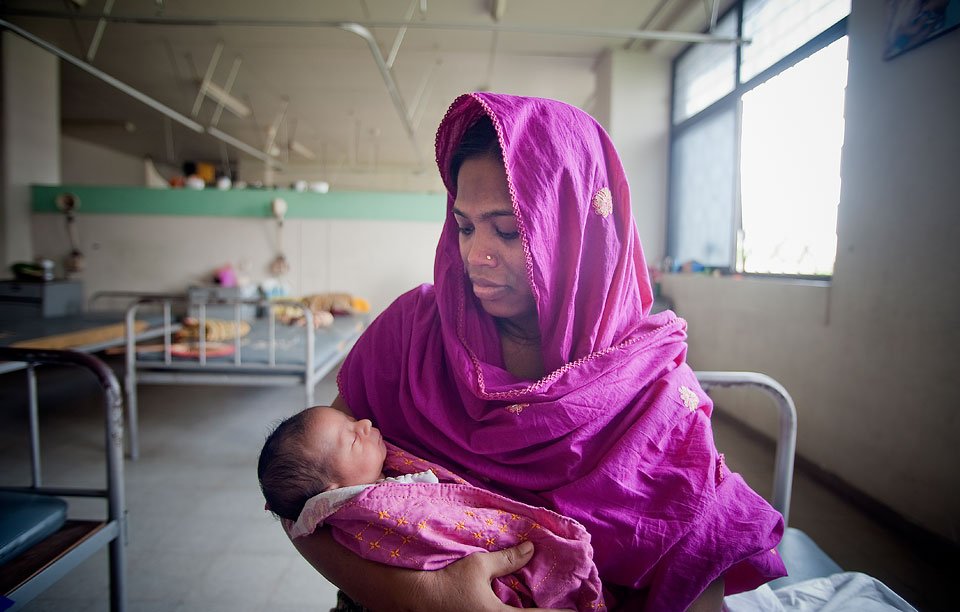Universal Health Coverage means health insurance for everyone, everywhere on the planet. It is one of the top Sustainable Development Goals that the international community pledged itself to achieve by 2030 — just 13 years from now.
This week, the World Health Organization released a major progress report detailing how close we are to a world where everyone has access to decent healthcare. The report finds profound inequity in who receives health coverage — the rich stay healthy and the sick stay poor. But it also shows how this improbable goal might actually become a reality.
Universal Health Coverage (UHC) – health care for everyone – sounds like jargon but it’s actually a simple truth of human life. Affordable health care should not be a privilege for the wealthy, but a right belonging to everyone. The report defines UHC as this, “UHC means that everyone – irrespective of their living standards – receives the health services they need, and that using health services does not cause financial hardship.”
Giving people access to essential health care doesn’t just make them healthier – it makes them better educated, more productive, and wealthier. Right now, we’re falling short on that access. Really short. The World Bank and the World Health Organization have co-released a new report measuring progress on Universal Health Coverage, and it’s very first statistic is grim: more than half of the world’s population lacks access to essential health services. That statistic is based on an index indicator representing health service coverage, based on tracer indicators of coverage of specific essential services like child immunization, treatment for high blood pressure, and antiretrovirals for HIV.
The numbers don’t improve when you go deeper. The number of people who are covered with most essential services is estimated at 2.3 to 3.5 billion in 2015. The remaining 7.3 billion people do not receive the essential health services they need. Coverage of essential services is highest in East Asia and North America, and lowest in sub-Saharan Africa and South Asia.
As one would expect, there are serious equity issues in health care. Health care is the province of the rich, or at least the middle class. Looking at seven basic maternal and child health services, the report found that less than one-fifth of mothers and infants in households in the poorest 20% in low-income and lower-middle-income countries received at least six of the seven interventions. In the richest 20% of the population, 74% of mothers and infants received at least six of those services. These kind of equity gaps can continue or worsen even as national averages for health coverage improve.
Catastrophic and impoverishing spending on health care is getting worse. Catastrophic spending is defined as non-reimbursed spending beyond a household’s ability to pay – it’s estimated at either 10% of 25% over total household income. Impoverishing spending is spending that takes up so much of the household budget that all other expenses are driven down to below poverty line levels. Paraphrasing the report, both the percentage and the size of the global population facing catastrophic payments have increased at all thresholds since 2000. At the 10% threshold for catastrophic spending, the region with the fastest increase in population facing catastrophic payments is Africa (+5.9% per year on average) followed by Asia (+3.6% per year).




Despite this barrage or ugly numbers, Universal Health Coverage is not impossible.
It will be, as the report states, a long road to UHC. But at least we’re on that road now. Universal health coverage is a global goal – and is in fact part of Sustainable Development Goal 3. Coverage of essential services is trending up – it increases at a little over 1% a year. (So, in a a bit less than 100 years we’ll have UHC even if we don’t take any useful action.) Finally, the tracer indicators for use of insecticide-treated bednets to prevent malaria, and provision of HIV care are actually very good: coverage of antiretroviral treatment for HIV increased from 2% in 2000 to 53% in 2016, and use of insecticide-treated nets for malaria prevention increased from 1% in 2000 to 54% in 2016.
It’s clear that where there is will for improving health care, it does take place.
